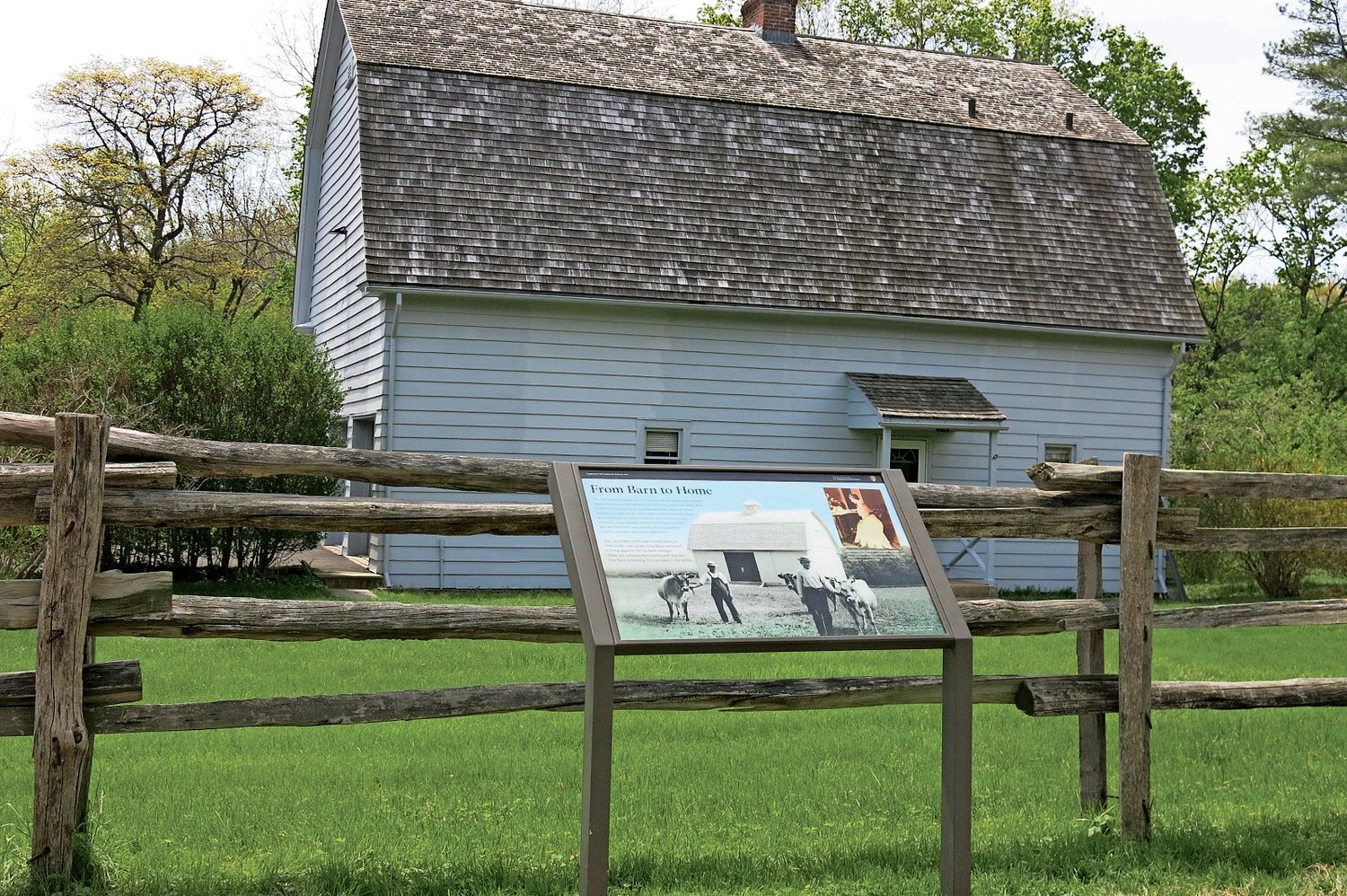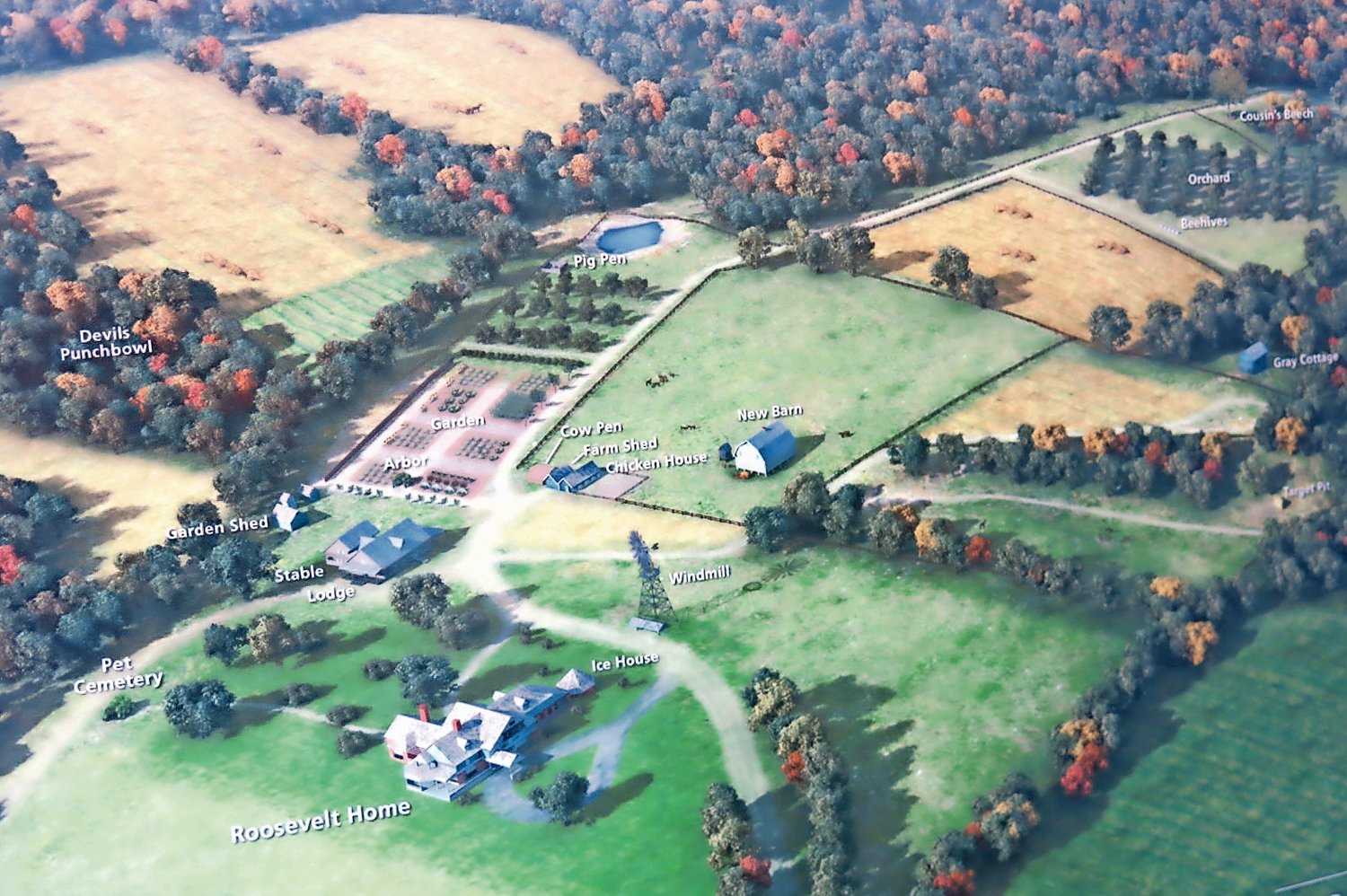Tuesday, April 23, 2024
Plans for new Sagamore Hill visitor center
Razing old center will open up grounds
At one time, a visit to Sagamore Hill, President Theodore Roosevelt’s Cove Neck home, could include buying a hot dog at the visitor center. Susan Sarna, the supervisory curator at the house museum, said the center was a souvenir shop/hot dog stand for years, ending its sales of frankfurters only when she arrived in 1990.
The first hot dog stand was opened during Roosevelt’s lifetime, in 1871, but there is no evidence to indicate that the president ever even tried a hot dog. But Tweed Roosevelt, a great-great-grandson, after acknowledging that TR had poor eating habits, said that “If [TR] had a chance to eat a hot dog, he probably would have.”
The Sagamore Hill Visitor Center, which is now boarded up, was heavily damaged in an early-morning fire on Christmas Eve. The blaze was caused by a faulty boiler under the men’s restroom, just outside the center.
But Sagamore Hill remains open to visitors. There are two portable toilets near the visitor center and full bathrooms at the Old Orchard Museum, which has served as the temporary visitor center since the fire. Attendance at the museum, once the home of Roosevelt’s oldest son, Ted Jr., has jumped, with 80 percent more visitors. After purchasing tickets to tour the house, which often requires a wait, they linger to investigate the offerings at the museum.
“They never came down here before, because I think some thought it was too far to walk,” Sarna explained. “People get a fuller experience coming here. This is where TR came often. It’s where his apple orchard was, and the beach.”
The National Park Service decided on April 15 that the visitor center will eventually be razed. It will be replaced with a grassy area and perhaps a pen without animals. And a half- acre garden will be added north of the center, that will include a rose arbor and vegetables, like peas, asparagus and corn. Roosevelt’s wife, Edith, had a four-acre garden where the parking lot is now.
The new center, which will also have a bookstore, will be housed inside one of the historic buildings that Roosevelt called the New Barn, south of the original center. And there will be no hot dogs sold there when it opens.
Tweed, the CEO of the Theodore Roosevelt Association, said he was pleased by the decision by the National Park Service not to repair the original visitor center. “I always thought of the visitor center as an ugly block,” he said, adding that it impeded the view of the house from the parking lot. “It will be nice to see the whole area feel like it did when my family lived there. I see this as another step into restoring as much as we can.”
The determination not to rebuild the old visitor center makes sense to Sarna as well. Although the New Barn needs some work, she said, why build a fake building when we already have a historic building that can be used?
The property at Sagamore Hill was an open space with only a barn in the woods, which Roosevelt referred to as the Old Barn, when he purchased 155 acres in 1880. Sagamore Hill was completed in late 1884. The Old Barn, which became dilapidated, was demolished in 1904.
A new barn was built in 1907 in the open, closer to the house. Although there was only one barn, the Roosevelts always referred to it as the New Barn.
The first building that Roosevelt had built was a lodge and stables, in 1883. It burned down in 1943.
In the 1940s, Edith Roosevelt wanted to provide a place for the family’s farmhands to live. She had the New Barn converted into an apartment.
Garage doors were added and a porch in 1947. Today there is a three-bedroom apartment in the New Barn that is rented to seasonal employees and interns. They can also live in the two-bedroom apartment above the garage that Ted Jr. built at Old Orchard, Sarna said.
The plans include the removal of the garage doors and porch, so the site will more closely approximate how Sagamore Hill looked when Roosevelt was alive.
The new visitor center will be larger, Sarna said. A two-story structure, the New Barn also has a basement that serves as the mechanical room where the boiler and water heater are housed. Sarna isn’t certain how much the renovations will cost, but she estimates they will take nearly three years.
As for the razing of the old visitor center, Sarna said the process has already begun. Underground utility lines are being checked now, she said, and the phone lines, which were under the center, have been disconnected. She is hopeful that the building will be taken down in a year.
Kelly Fuhrmann, superintendent of the Sagamore Hill National Historic Site, said the work that is being done will be a team effort. “We will be working with the NPS Northeast Regional Office to implement planning for the near-term removal of the existing burned visitor center building from the park’s historic core/cultural landscape,” Fuhrmann said, adding that providing ‘for enhanced visitor services with an architecturally sensitive renovation in the historic New Barn facility will serve the park’s mission and provide for an inspiring visitor experience.”
Sarna is a veteran of renovations. She oversaw a three-year extensive renovation of Roosevelt’s house that was finished in 2013. The new visitor center, she said, will not be as much work. “But we don’t want to rush into it,” she added, smiling. “This is really something I always wanted to do — get rid of that hot dog stand.”
HELP SUPPORT LOCAL JOURNALISM
The worldwide pandemic has threatened many of the businesses you rely on every day, but don’t let it take away your source for local news. Now more than ever, we need your help to ensure nothing but the best in hyperlocal community journalism comes straight to you. Consider supporting the Herald with a small donation. It can be a one-time, or a monthly contribution, to help ensure we’re here through this crisis. To donate or for more information, click here.
Sponsored content
Other items that may interest you








